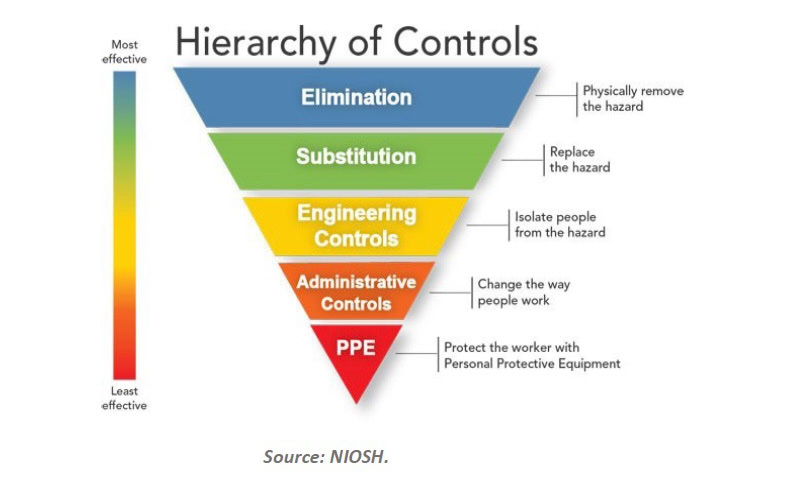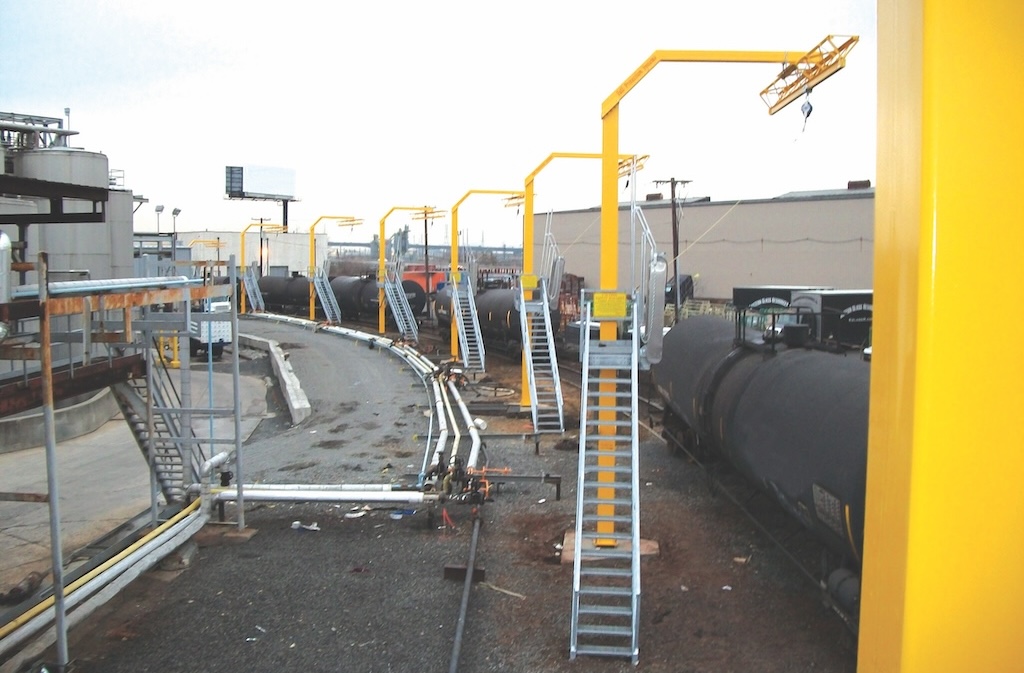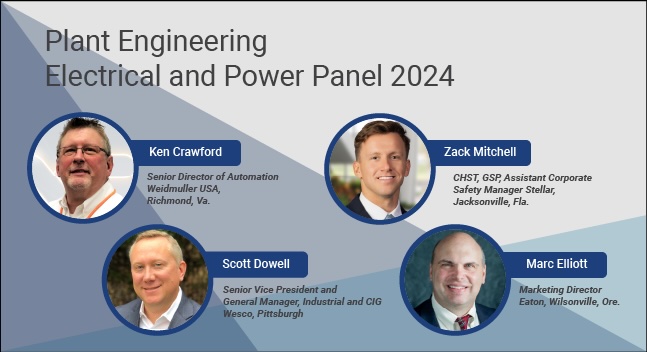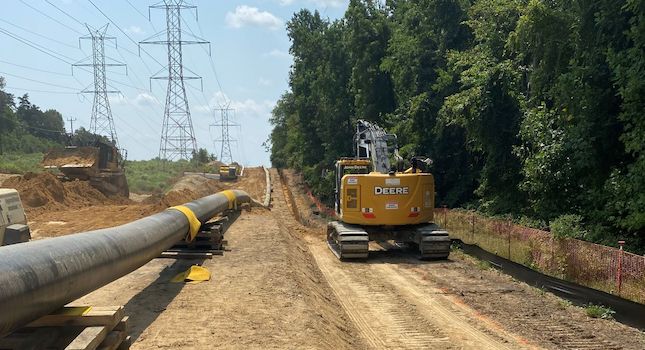The pursuit of excellence is more than part of the fabric at Square D in Columbia, MO -- it's the culture
When the Square D circuit breaker plant in Columbia, MO began operating in late 1978, it was pretty much like any other factory of that era. Products were produced in large batches and quality was inspected by the Quality department. But today, the Columbia facility is a shining star in the Schneider Electric Electrical Distribution Business crown.
Plant operations manager Doug Frevert credits his employees with the success of this transformation. “The willingness and the ability of the people to commit to change, while maintaining the service levels to the customer and their commitments to excellence — the manufacturing excellence efforts, the continuous improvement efforts that we do every day — have just been tremendous,” he said.
“We had a band of quality engineers roaming the floor inspecting quality,” said Frevert. “We had a controlled stores area that took up 10,000 square feet in the back of the plant. There were welders on one end of the plant, and assembly operations on the other end. Rework. There was a tremendous amount of material movement going back and forth. You made it here, then you moved it into controlled stores, then you checked it out of controlled stores into the assembly area.”
A better way of doing business
The management team at the Columbia plant figured there must be a better way of doing business. Product work flow cells were introduced during the mid-1980s along with Kanbans, small batch production, Statistical Process Control (SPC) and inventory stores at the point of use. “As we got wiser, we assimilated the fabrication operations and the assembly operations into work cells to eliminate that movement,” said Frevert. “When we went to SPC, we made the operators responsible for their own quality.”
Although Frevert sees the plant’s transition to Lean as an evolution, formal introduction to the concepts of Lean manufacturing, Lean teams, 5s, small lot/single piece flow, value stream mapping and Six Sigma came around 1998. Frevert said the effort to get better drove the plant on the Lean journey — “the continuous improvement journey toward manufacturing excellence.”
Part of Phil Stroupe’s role as a manufacturing manager at the Columbia, MO Square D plant is to manage and facilitate Lean manufacturing techniques and philosophy, which involves consulting with department managers and supervisors on day-to-day issues as well as strategic
planning. According to Frevert, Stroupe helped lead the continuous improvement journey toward Lean manufacturing.
As the employees at the Square D plant in Columbia became increasingly empowered, their level of engagement increased as well. Perhaps the most important aspect of the high level of employee engagement, according to Frevert, is their commitment to change.
“We thought we were good prior to this,” Frevert said. “Then as we became more understanding of the opportunities that Lean offered in terms of waste reduction and improvement in the operation, it wasn’t a matter of can we improve, it was a matter of what are we going to work on — because we have so many opportunities that we now recognize that we need to work on.”
Improvement came with capital investments. It also came with many little things that the operators could improve — and were empowered to improve — in their day-to-day jobs. “It doesn’t necessarily have to be a major capital investment to make that key improvement,” Frevert said. “It can be something as small as a workstation layout change or a tool change.”
Changes and improvements started to add up, resulting in a
significant transformation on the plant floor. The QOM2 line, plating and stamping area remain in their original locations. “Basically, everything else changed,” said Frevert. “It involved a total rearrangement of the north end of the facility, mainly the assembly areas. There was a total transformation.”
Change here and there
If rearranging the shop floor was not enough, the Columbia, MO plant moved product lines in and out simultaneously. Personnel from Columbia were moving circuit breaker lines to its sister plant in Tlaxcala, Mexico, as well as training the employees there.
Other teams were at Schneider Electric’s Cedar Rapids, IA facility learning about different product lines that would then be located in Columbia.
Frevert said he had people going both directions to make those efforts successful. “We were doing manufacturing excellence diagnostics — which is a huge commitment — during that same timeframe.
“And we were starting up a brand new product line — all at the same time.”
Asking employees to make their workstation better knowing that it would be moved two months later could be a tough conversation. In some plants, workers might ask why they should make a process better when it will be taken away, ultimately. “We didn’t get that response,” Frevert said. “We made it better and then we moved it.”
Frevert said his employees understand change and the need to change, and that being successful would put the Columbia, MO Square D plant in a position to get other products lines. “They understood the need to do it, and they jumped in and helped make it happen,” he said.
Safety at Square D
Although benefits of Lean manufacturing include productivity and fiscal rewards, much of the driving force behind Square D Columbia’s Lean initiatives involved ergonomics and safety. “We categorically look at wasted motion from the safety standpoint,” Stroupe said. “We translate wasted motion to ergonomic concerns.”
Safety is a big deal at the Square D plant in Columbia. “We made a determination in late 1997, going into 1998, that we weren’t satisfied with where we were in terms of our safety numbers,” said Estil Poff, manager of safety, security and environment at the facility. “That’s when we developed our current Preventive Care and Ergonomic program. That’s also when we started the Safety Leader program.”
The plant has a list of safety incentives such as the Square D Dollar program; Square D Dollars can be used in the cafeteria or added to employees’ paychecks. “We give 20 Square D Dollars to an employee for every year that they don’t have an injury that requires medical treatment,” Poff said. “We do barbeques, either for no lost time or no OSHA reportables, and that’s getting a tremendous amount of traction.
“We were moving forward with all this on our own,” Poff continued. “But then new corporate leadership came on board, and that immediately became a number-one priority for the company, so we were able to marry what we were doing with the top-down emphasis.”
Many issues that start out as safety initiatives also satisfy continuous improvement goals. In 2004, the operators used to handle all of the circuit breakers manufactured on the QOM2 line. Although the breakers weigh only slightly more than two pounds, operators had to lift trays containing eight of them — nearly 20 pounds including the weight of the tray.
The Square D plant integrated automation into the QOM2 line. Improvements include robots, material handling, assembly aids, automatic riveters, special fixtures, automatic testing and calibration, conveyors that double as product buffers and semi-automated batching for transportation to packing. Counter-balanced conveyor personnel gates, adjustable-height lift tables and ergonomically balanced torque screwdrivers were also added to the line.
These changes came about as safety and
ergonomic initiatives. The plant’s commitment to eliminate the potential for musculoskeletal injuries provided significant motivation to revamp the line. The automation along with the conveyor system allowed the plant to eliminate lifting of trays and the need for an operator to move around one ton of material every four hours. In 1996, there were 20 musculoskeletal cases listed on the OSHA-recordable log. There have been no reported cases since 2006 in any area of the plant. The culmination of these efforts is that, to date, the plant has gone more than 1,450 days and 2.5 million hours without a lost time accident.
However, the Columbia facility got more of a payoff than the elimination of these injuries. “Back in the day when Phil and I were out on the floor, we used to say we have to get 1,500 breakers completed today before we go home,” Frevert said. “And we had 50 people working to make that happen. Today, with the improvements this team has made, they can do 4,000 a day with 22 people.”
The other 28 people were redistributed in the plant, according to Frevert.
The Square D plant in Columbia, MO didn’t automate for the sake of automating. They did so when it made good technical and good business sense to do so. Safety is an ongoing driver of continuous improvement; so is quality.
Continuous improvement: it’s all about the people
Another evidence of employee engagement occurs twice each day. “We have what we call SIM meetings — short interval management meetings — a couple of times a day,” said Frevert. “The key staff such as a supervisor, quality engineer, materials analyst, line leader and manufacturing engineer meet on the floor in the product area with their SIM board, which includes their barrier log and things that are keeping them from being successful for that period of the day. They engage two times a day to say, ‘Ok, what’s happening today? What do we need to fix? What do we need to tweak? What do we need to go work on?’”
Ideas for improvement become countermeasures to the barriers that come out of those SIMs. A SIM training course has been developed for all the manufacturing disciplines in the plant.
The success of Schneider Electric’s Square D plant in Columbia, MO is no accident — it came from a lot of hard work from everyone. “It’s all about the people,” Frevert said. “It’s about the people being engaged in the continuous improvement process and the effort to get better every day. The strive for perfection and the buy-in to manufacturing excellence and the safety initiatives — the whole story coming together — it’s about the people being a part of that, and that’s what’s made us successful.
“It becomes the culture; it becomes who you are.”



